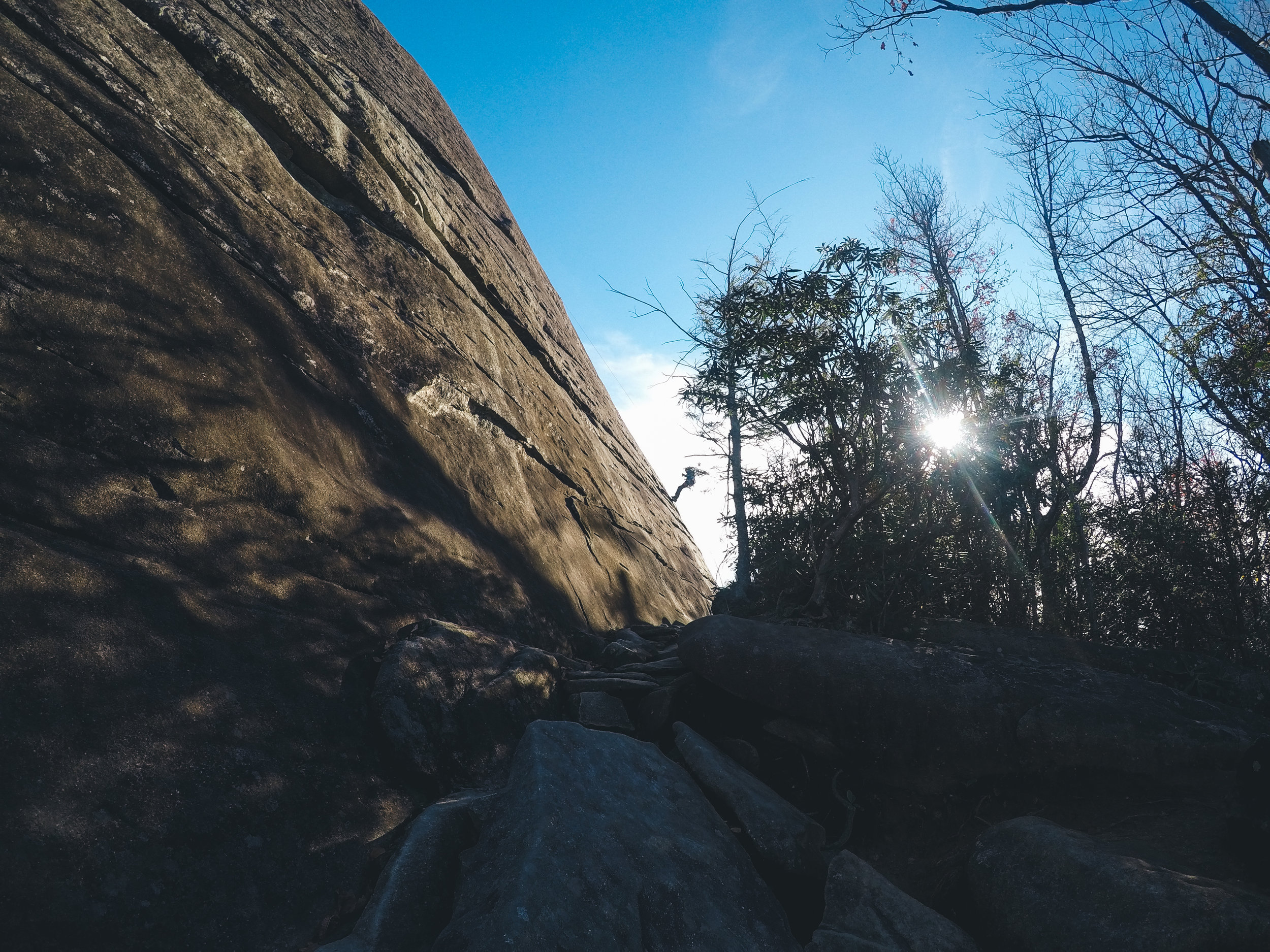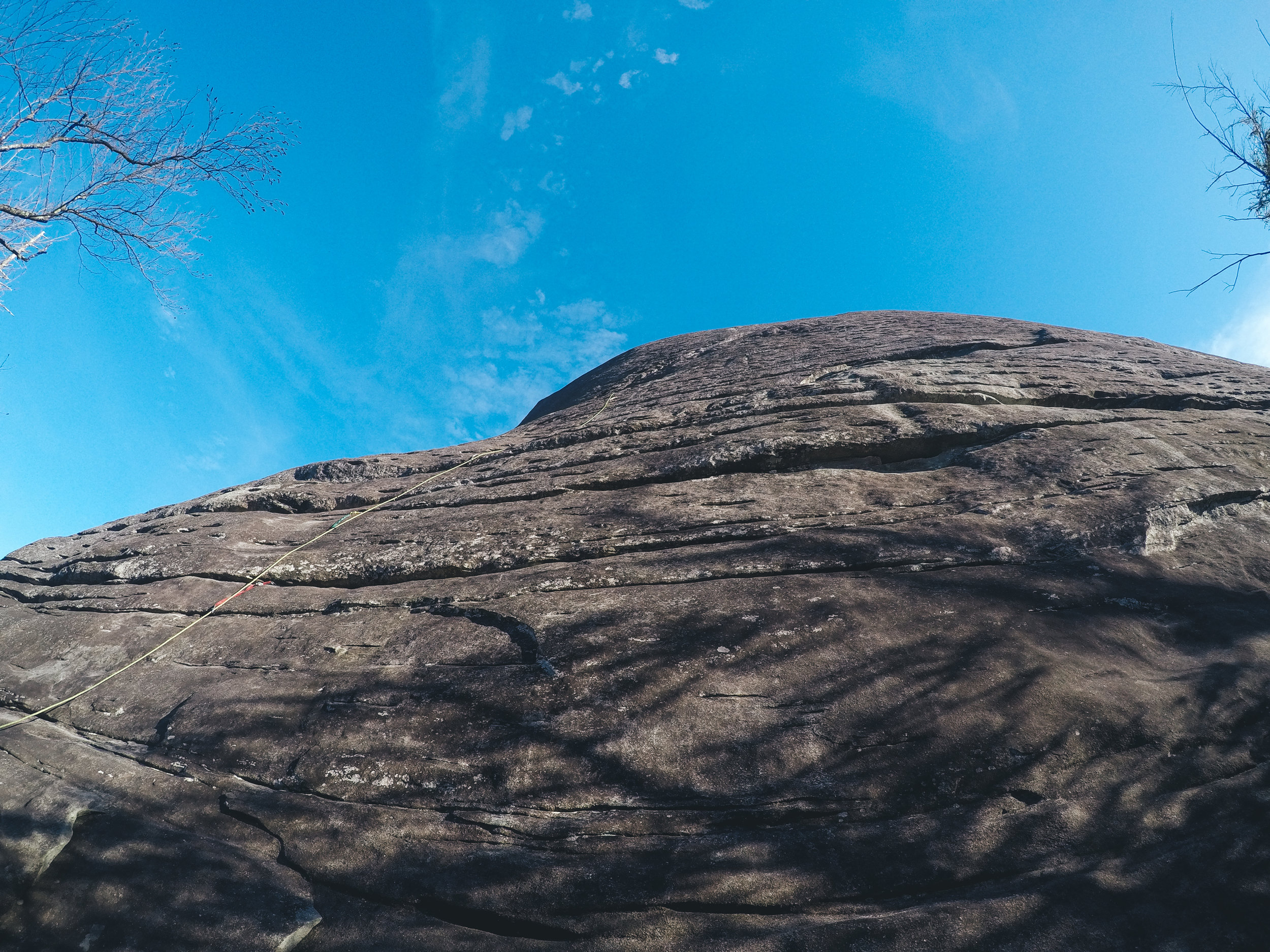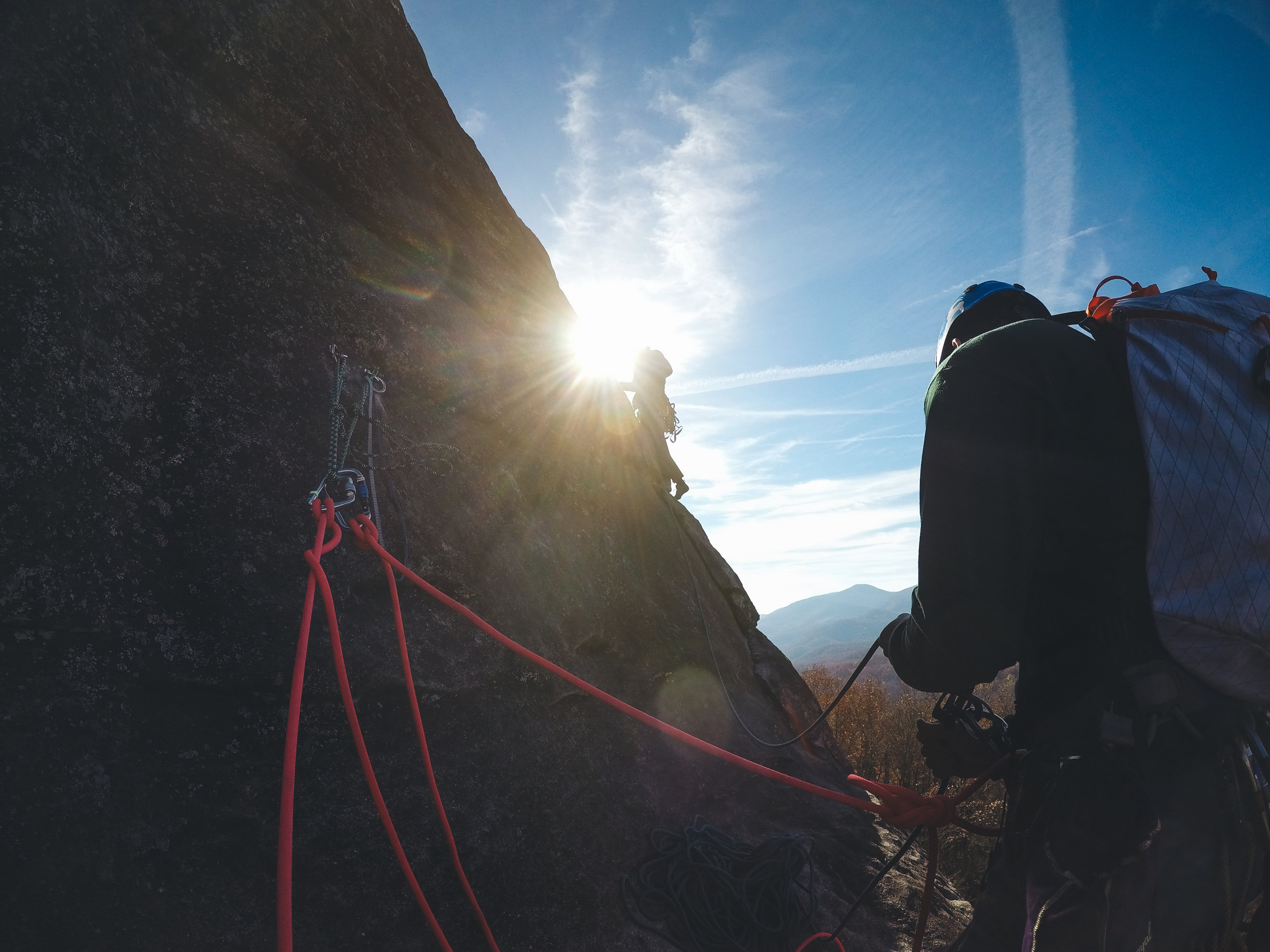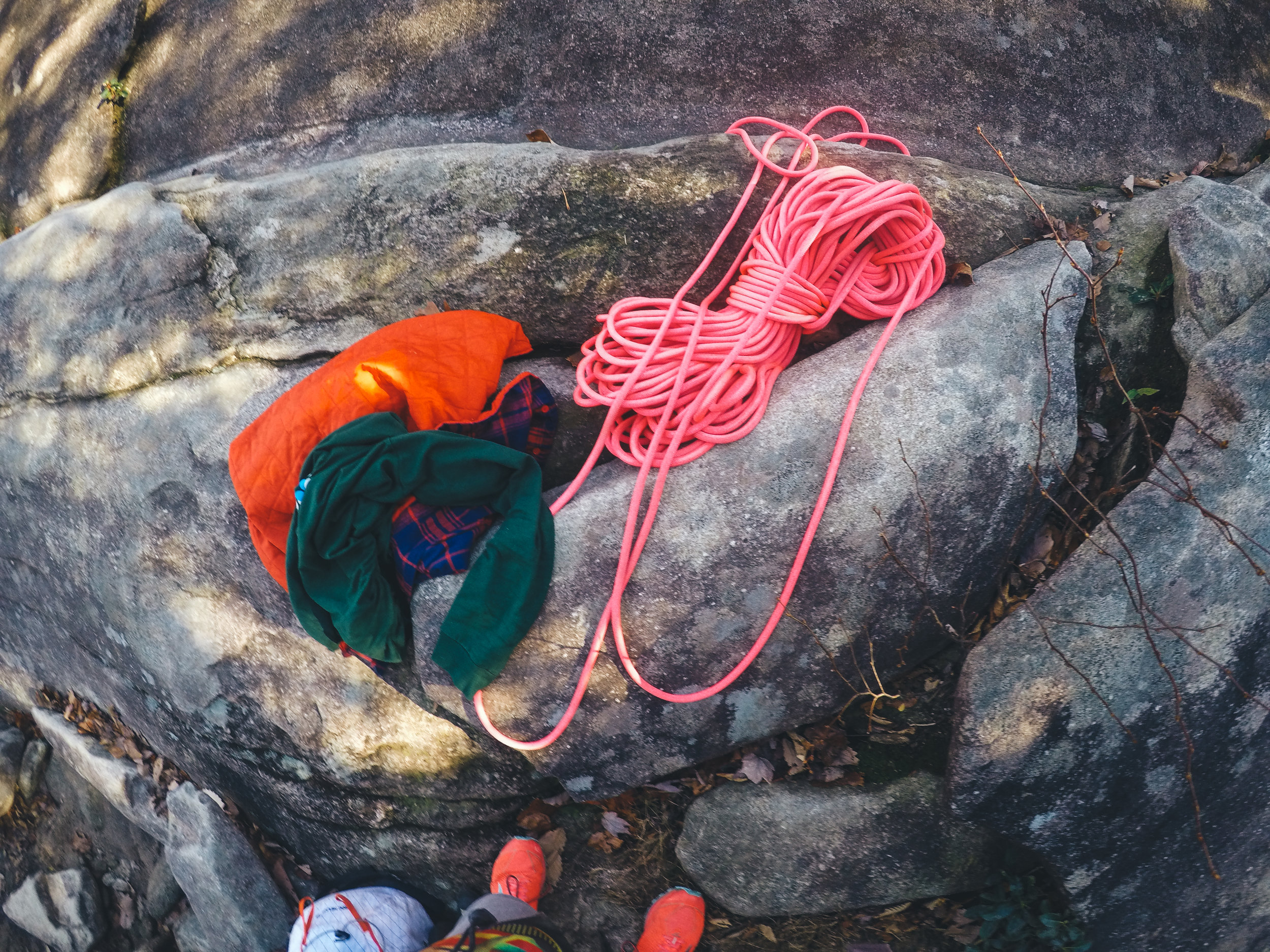November 9, 2017: 22:00
Let the road trip begin. Will, Pierce and I get on the road to North Carolina. Lucky enough for us, Pierce’s Mema lives in Pulaski and we stay at her house halfway to NC. We get in around 2 am and strongly enjoy the luxury of beds and heat!
November 10, 2017: 08:30
We wake up to the sizzle of bacon and the smell of coffee, yummmm. Mema has a whole breakfast laid out for us. There are eggs, sausage, biscuits, gravy, and many southern delights that involve creative uses for apples, all ready for us when we get downstairs!!
Over breakfast Mema tells us about her inspiring life and how she refused to be housewife and mom when she was younger, by getting a job in a hospital as a file clerk, managing patient's medical records. WOOHOO, feminism (aka she is a certified b@da$$). In addition, she also was the first person to use a computer at the hospital she worked at. It was the first time a person’s medical files were on a computer and you could bring up and send their medical history in seconds. Hearing this is pretty cool considering most people in our generation can't remember a world without computers.
After breaky and thanking Mema for her amazing hospitality, we head out to Looking Glass Rock,NC.
12:00
We finally make it to the national forest where Looking Glass Rock is!
“From the road fork, continue up the gravel road for about two miles, passing the Slickrock Falls trailhead, and park in a small lot with a kiosk; this is the Sun Wall trailhead.”
(note: The "Road fork" to get to the Nose Area area is the first dirt road on your right side after you pass the ranger station on your left side)
13:00
We start the approach and to Looking Glass Rock, where we start our first climb of the trip: Peregrine: 5.9, 450ft: 4 pitches.
Pitch 1: Keekee Lead (aka myself): 5.7 80ft- Slabby, micro to mid-sized cams were great, and a c3 3 to build a low anchor (no bolted anchor on this pitch, but there is a nice sized ledge and low crack that you can make a really nice anchor with)
Pitch 2: Will Lead: 5.9 120ft- Slabby, used micro to mid-sized cams. Will’s Beta: “Don’t run out the last 20ft before the anchor because getting up the last couple feet to the ledge isn’t as easy as it looks. I went for it at first after running out and got a little unnerved” (no bolted anchors, but there is a sloped ledge that you can build a nice anchor on in a deep horizontal crack)
For the sake of time and the freezing temperatures on the wall, Pierce started to lead the next pitch while I jumarred up a fixed line.
“Jumarring, also referred to as jugging, is where the second climber (the one who belays the lead climber on the route) uses ascenders to climb the rope instead of climbing directly on the rock.”
Pitch 3: Pierce Lead: 5.7 120ft- Slabby (so I can stop being redundant, everything on the nose area is slabby) This was a pretty epic lead. By the time I jumarred to the anchor it was dark and the stars were out. Pierce’s body was silhouetted by the dim light of the night sky, his headlamp shone brightly amongst the stars. It might have been cold but that stary night climb is definitely one the coolest things I've ever seen, and Pierce did some gnarly leading via headlamp. (this pitch ended on bolted anchors)
“If you told me that I would be leading trad in the dark with a headlamp a year ago I would have laughed in your face.”
By the time Pierce was anchored in it was freezing and Will and I decided to jumar the last pitch and we all called it a day and bailed on the rap rings on Pitch 3. (note: we had 2 70m ropes and they did not make it all the way to the bottom, so you will need to rap down to the rings you pass on pitch 2)
That night we camped in the national park. There are tons of places to camp so you don't need to worry about making a reservation or anything like that. (fires are also permitted woohoo)
November 11, 2017 09:00
We wake up, pack up and head out for day 2. When we get to The Nose area we decide to climb The Nose: 5.8, 400ft: 4 pitches. (note: we decided to bail at the end of Pitch 3 so we wouldn't get stuck in the dark this time, little did we know that things were not going to turn out the way we hoped)
Pitch 1: Keekee Lead: 5.5 90ft- Nice and easy to some nice bolted anchors on a big ledge. I used micro and mid-sized cams. Have a pre-tied quad for the anchors to save time.
Pitch 2: Will Lead: 5.8 100ft- The crux of this pitch is about 8 ft to the right of the Pitch 1 anchors and 25ft up. This was when Will took his first trad fall. Beta: Get a high right foot and smear like crazy, get your right hand on a solid shallow eyebrow and then TRUST YOUR FEET, get your weight to the left and reach up and to the right for some bomber underclings (note: this was my beta and I am extremely small so if you are tall this will probably be hard because you almost need to do a right-hand foot match) (This pitch also ends on bolted anchors woohoo!)
Pitch 3: Keekee Lead, 5.8 100ft: The hardest part of this climb is the start, so just make sure you go straight up from the anchors until you get your feet in the eyebrows right above the pitch 2 anchors and then follow them on a diagonal to the right, using the eyebrows as underclings and smearing slightly below them. Bolted anchors again :)
Because the sun started to set by the time Pierce and Will finished pitch 3 we decided to bail and started rappelling down so we wouldn't have to climb in the dark again.
While flaking our ropes we met a really nice couple who were rappelling from rings about 25 ft away from us (out of respect for these climbers I am not using their real names, and will use John and Emma as substitutes).
When we were halfway down our last rappel between the ground and Pitch 2 anchors we hear John yell out,
“Hey guys are you rappelling? By any chance can you reach our rope?”
It turns out that John and Emma had accidentally left their stopper knot in and had already started to pull their rope through. (a stopper knot makes sure you don't rappel off the end of the rope) However, if you don't undo the stopper before pulling the rope through your rope will get stuck at the rap rings and in this case, they became stranded at the next set of anchors about 200ft off the ground. (note: there is no cell service in this national park and we were the last 2 parties on the rock)
Because we had already gotten below their rope there was no way for us to swing and grab their rope which meant Will and I had bump back up to our Rap Rings (at the pitch 2 anchors) and then climb Pitch 3 again, pull their rope up and untie their stopper. The main issue with this situation was the sun was setting and it was getting extremely cold again.
We decided to have Pierce rappel down to the bottom because it would be quicker for a team of 2 to go back up pitch 3. After Pierce rappelled and we organized ropes and gear to have Will ready to lead pitch 3 (5.8 100ft), the sun was almost down and there was just a slight golden haze everywhere, so once again we are climbing with headlamps. However, remember how the hardest part of pitch 3 was the start? Well, Will got slightly off course at the beginning and before he was able to place any gear his foot slipped off a smear and he ended up having a factor 2 fall.
“A fall of 20 feet is much more severe (exerts more force on the climber and climbing equipment) if it occurs with 10 feet of rope out (i.e. the climber has placed no protection and falls from 10 feet above the belayer to 10 feet below—a factor 2 fall) than if it occurs 100 feet above the belayer (a fall factor of 0.2), in which case the stretch of the rope more effectively cushions the fall.”
So basically, factor 2 falls are some serious sh*t. However, mistakes happen and smearing in the dark when it's freezing is not easy.
It is hard to explain what these 3 seconds were like, and I can't write for Will (can't imagine the fear or pain that he was experiencing at the time). Will ended up tweaking his ankle and popping his shoulder out and then the force of him stopping popped his shoulder back in, resulting in a ligament sprain and having to take 2-3 weeks off of climbing.
I can’t emphasize how much It sucks seeing your climbing partner in pain. You create a special bond with the people you climb with because you have to trust them 100% with your life.
When I asked Will if he had anything to add, his response was simply:
“If you can trust your partner with a factor 2 fall you can trust them with anything :)”
This trust is crucial when climbing and I can easily say that I would trust Will and Pierce with my own life if the roles were ever reversed. Lucky enough, Will was able to move his shoulder and put weight on his ankle, allowing him to get back up to the pitch 2 anchors. Since his shoulder and ankle were hurt he could not climb the route, however his mental fortitude kept him calm and level headed enough to belay me. Which meant I needed to climb the route that he just took a factor 2 fall on, in 30-degree weather, in the pitch dark via head-lamp. To put this in perspective put your hands and feet into the fridge, turn off the lights and then shine a flashlight. That's what it was like climbing pitch 3 (+200 ft off the ground).
Fast forward a little, I was able to climb pitch 3 and untie Emma and John’s stopper so they could retrieve their rope. Then I rappelled and cleaned Pitch 3 and got back to the belaying station where Will was, and we were able to rappel down to the ground.
Looking back at this experience, I am so grateful to have such amazing climbing partners. Pierce trusted and believed in Will and me to rescue the climbers. Then when Will wasn’t able to climb he trusted and believed in my climbing ability to rescue the climbers. The power of trust and faith should never be overlooked because when I doubted my own climbing ability it only lasted for a second because I knew that they 100% confidence in me.
I also want to point out that climbing is a dangerous sport and no one should take it lightly. There are so many ways that this all could've gone extremely wrong.
If we weren’t there that couple would have been left out on that ledge all night in 20-30 degree weather until people came to climb the next day.
WIll could have easily landed wrong in the fall and seriously injured himself or knocked himself out (to clarify we were all wearing helmets).
If I hadn’t known to pull up on an ATC during a factor 2 fall, instead of down (the normal direction to break on an ATC) the rope would have just slipped through the ATC and WIll could have taken a 200ft ground fall.
Or I could have fallen from a mistake while anchoring and rappelling by myself at the top of pitch 3.
I could play the “If game” forever, but the point is KNOW YOUR SYSTEMS. BE PRECISE and 100% MINDFUL while you are climbing. Because, small mistakes like leaving a stopper knot in your rope can snowball into horrible accidents.
This trip was made possible by Will and Pierce.
And a special thanks to David who made this blog post readable, by editing my word vomit (aka my horrible spelling and grammar) he is also an amazing climber and is currently battling a finger strain. However, he will definitely be in future posts, so keep an eye out for him!




